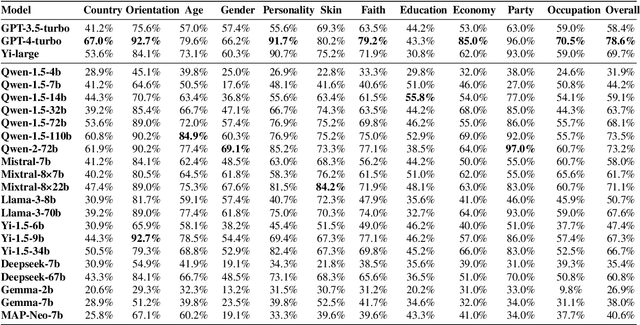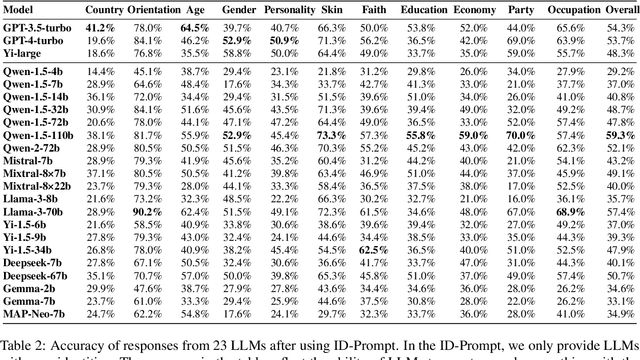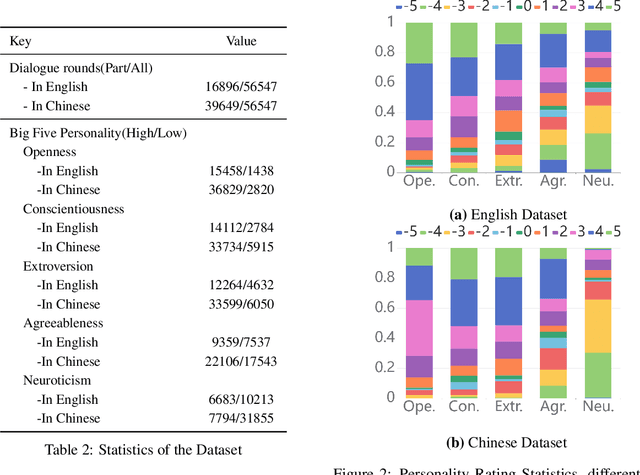Zhaofeng He
Generative Iris Prior Embedded Transformer for Iris Restoration
Jun 28, 2024Abstract:Iris restoration from complexly degraded iris images, aiming to improve iris recognition performance, is a challenging problem. Due to the complex degradation, directly training a convolutional neural network (CNN) without prior cannot yield satisfactory results. In this work, we propose a generative iris prior embedded Transformer model (Gformer), in which we build a hierarchical encoder-decoder network employing Transformer block and generative iris prior. First, we tame Transformer blocks to model long-range dependencies in target images. Second, we pretrain an iris generative adversarial network (GAN) to obtain the rich iris prior, and incorporate it into the iris restoration process with our iris feature modulator. Our experiments demonstrate that the proposed Gformer outperforms state-of-the-art methods. Besides, iris recognition performance has been significantly improved after applying Gformer.
* Our code is available at https://github.com/sawyercharlton/Gformer
GIEBench: Towards Holistic Evaluation of Group Identity-based Empathy for Large Language Models
Jun 24, 2024



Abstract:As large language models (LLMs) continue to develop and gain widespread application, the ability of LLMs to exhibit empathy towards diverse group identities and understand their perspectives is increasingly recognized as critical. Most existing benchmarks for empathy evaluation of LLMs focus primarily on universal human emotions, such as sadness and pain, often overlooking the context of individuals' group identities. To address this gap, we introduce GIEBench, a comprehensive benchmark that includes 11 identity dimensions, covering 97 group identities with a total of 999 single-choice questions related to specific group identities. GIEBench is designed to evaluate the empathy of LLMs when presented with specific group identities such as gender, age, occupation, and race, emphasizing their ability to respond from the standpoint of the identified group. This supports the ongoing development of empathetic LLM applications tailored to users with different identities. Our evaluation of 23 LLMs revealed that while these LLMs understand different identity standpoints, they fail to consistently exhibit equal empathy across these identities without explicit instructions to adopt those perspectives. This highlights the need for improved alignment of LLMs with diverse values to better accommodate the multifaceted nature of human identities. Our datasets are available at https://github.com/GIEBench/GIEBench.
MMFakeBench: A Mixed-Source Multimodal Misinformation Detection Benchmark for LVLMs
Jun 13, 2024



Abstract:Current multimodal misinformation detection (MMD) methods often assume a single source and type of forgery for each sample, which is insufficient for real-world scenarios where multiple forgery sources coexist. The lack of a benchmark for mixed-source misinformation has hindered progress in this field. To address this, we introduce MMFakeBench, the first comprehensive benchmark for mixed-source MMD. MMFakeBench includes 3 critical sources: textual veracity distortion, visual veracity distortion, and cross-modal consistency distortion, along with 12 sub-categories of misinformation forgery types. We further conduct an extensive evaluation of 6 prevalent detection methods and 15 large vision-language models (LVLMs) on MMFakeBench under a zero-shot setting. The results indicate that current methods struggle under this challenging and realistic mixed-source MMD setting. Additionally, we propose an innovative unified framework, which integrates rationales, actions, and tool-use capabilities of LVLM agents, significantly enhancing accuracy and generalization. We believe this study will catalyze future research into more realistic mixed-source multimodal misinformation and provide a fair evaluation of misinformation detection methods.
Mini Honor of Kings: A Lightweight Environment for Multi-Agent Reinforcement Learning
Jun 06, 2024Abstract:Games are widely used as research environments for multi-agent reinforcement learning (MARL), but they pose three significant challenges: limited customization, high computational demands, and oversimplification. To address these issues, we introduce the first publicly available map editor for the popular mobile game Honor of Kings and design a lightweight environment, Mini Honor of Kings (Mini HoK), for researchers to conduct experiments. Mini HoK is highly efficient, allowing experiments to be run on personal PCs or laptops while still presenting sufficient challenges for existing MARL algorithms. We have tested our environment on common MARL algorithms and demonstrated that these algorithms have yet to find optimal solutions within this environment. This facilitates the dissemination and advancement of MARL methods within the research community. Additionally, we hope that more researchers will leverage the Honor of Kings map editor to develop innovative and scientifically valuable new maps. Our code and user manual are available at: https://github.com/tencent-ailab/mini-hok.
Localize, Understand, Collaborate: Semantic-Aware Dragging via Intention Reasoner
Jun 01, 2024Abstract:Flexible and accurate drag-based editing is a challenging task that has recently garnered significant attention. Current methods typically model this problem as automatically learning ``how to drag'' through point dragging and often produce one deterministic estimation, which presents two key limitations: 1) Overlooking the inherently ill-posed nature of drag-based editing, where multiple results may correspond to a given input, as illustrated in Fig.1; 2) Ignoring the constraint of image quality, which may lead to unexpected distortion. To alleviate this, we propose LucidDrag, which shifts the focus from ``how to drag'' to a paradigm of ``what-then-how''. LucidDrag comprises an intention reasoner and a collaborative guidance sampling mechanism. The former infers several optimal editing strategies, identifying what content and what semantic direction to be edited. Based on the former, the latter addresses "how to drag" by collaboratively integrating existing editing guidance with the newly proposed semantic guidance and quality guidance. Specifically, semantic guidance is derived by establishing a semantic editing direction based on reasoned intentions, while quality guidance is achieved through classifier guidance using an image fidelity discriminator. Both qualitative and quantitative comparisons demonstrate the superiority of LucidDrag over previous methods. The code will be released.
Rethinking Class-Incremental Learning from a Dynamic Imbalanced Learning Perspective
May 24, 2024



Abstract:Deep neural networks suffer from catastrophic forgetting when continually learning new concepts. In this paper, we analyze this problem from a data imbalance point of view. We argue that the imbalance between old task and new task data contributes to forgetting of the old tasks. Moreover, the increasing imbalance ratio during incremental learning further aggravates the problem. To address the dynamic imbalance issue, we propose Uniform Prototype Contrastive Learning (UPCL), where uniform and compact features are learned. Specifically, we generate a set of non-learnable uniform prototypes before each task starts. Then we assign these uniform prototypes to each class and guide the feature learning through prototype contrastive learning. We also dynamically adjust the relative margin between old and new classes so that the feature distribution will be maintained balanced and compact. Finally, we demonstrate through extensive experiments that the proposed method achieves state-of-the-art performance on several benchmark datasets including CIFAR100, ImageNet100 and TinyImageNet.
CLIP model is an Efficient Online Lifelong Learner
May 24, 2024Abstract:Online Lifelong Learning (OLL) addresses the challenge of learning from continuous and non-stationary data streams. Existing online lifelong learning methods based on image classification models often require preset conditions such as the total number of classes or maximum memory capacity, which hinders the realization of real never-ending learning and renders them impractical for real-world scenarios. In this work, we propose that vision-language models, such as Contrastive Language-Image Pretraining (CLIP), are more suitable candidates for online lifelong learning. We discover that maintaining symmetry between image and text is crucial during Parameter-Efficient Tuning (PET) for CLIP model in online lifelong learning. To this end, we introduce the Symmetric Image-Text (SIT) tuning strategy. We conduct extensive experiments on multiple lifelong learning benchmark datasets and elucidate the effectiveness of SIT through gradient analysis. Additionally, we assess the impact of lifelong learning on generalizability of CLIP and found that tuning the image encoder is beneficial for lifelong learning, while tuning the text encoder aids in zero-shot learning.
Dynamic Generation of Personalities with Large Language Models
Apr 10, 2024



Abstract:In the realm of mimicking human deliberation, large language models (LLMs) show promising performance, thereby amplifying the importance of this research area. Deliberation is influenced by both logic and personality. However, previous studies predominantly focused on the logic of LLMs, neglecting the exploration of personality aspects. In this work, we introduce Dynamic Personality Generation (DPG), a dynamic personality generation method based on Hypernetworks. Initially, we embed the Big Five personality theory into GPT-4 to form a personality assessment machine, enabling it to evaluate characters' personality traits from dialogues automatically. We propose a new metric to assess personality generation capability based on this evaluation method. Then, we use this personality assessment machine to evaluate dialogues in script data, resulting in a personality-dialogue dataset. Finally, we fine-tune DPG on the personality-dialogue dataset. Experiments prove that DPG's personality generation capability is stronger after fine-tuning on this dataset than traditional fine-tuning methods, surpassing prompt-based GPT-4.
MQE: Unleashing the Power of Interaction with Multi-agent Quadruped Environment
Mar 24, 2024Abstract:The advent of deep reinforcement learning (DRL) has significantly advanced the field of robotics, particularly in the control and coordination of quadruped robots. However, the complexity of real-world tasks often necessitates the deployment of multi-robot systems capable of sophisticated interaction and collaboration. To address this need, we introduce the Multi-agent Quadruped Environment (MQE), a novel platform designed to facilitate the development and evaluation of multi-agent reinforcement learning (MARL) algorithms in realistic and dynamic scenarios. MQE emphasizes complex interactions between robots and objects, hierarchical policy structures, and challenging evaluation scenarios that reflect real-world applications. We present a series of collaborative and competitive tasks within MQE, ranging from simple coordination to complex adversarial interactions, and benchmark state-of-the-art MARL algorithms. Our findings indicate that hierarchical reinforcement learning can simplify task learning, but also highlight the need for advanced algorithms capable of handling the intricate dynamics of multi-agent interactions. MQE serves as a stepping stone towards bridging the gap between simulation and practical deployment, offering a rich environment for future research in multi-agent systems and robot learning. For open-sourced code and more details of MQE, please refer to https://ziyanx02.github.io/multiagent-quadruped-environment/ .
UniDoorManip: Learning Universal Door Manipulation Policy Over Large-scale and Diverse Door Manipulation Environments
Mar 12, 2024Abstract:Learning a universal manipulation policy encompassing doors with diverse categories, geometries and mechanisms, is crucial for future embodied agents to effectively work in complex and broad real-world scenarios. Due to the limited datasets and unrealistic simulation environments, previous works fail to achieve good performance across various doors. In this work, we build a novel door manipulation environment reflecting different realistic door manipulation mechanisms, and further equip this environment with a large-scale door dataset covering 6 door categories with hundreds of door bodies and handles, making up thousands of different door instances. Additionally, to better emulate real-world scenarios, we introduce a mobile robot as the agent and use the partial and occluded point cloud as the observation, which are not considered in previous works while possessing significance for real-world implementations. To learn a universal policy over diverse doors, we propose a novel framework disentangling the whole manipulation process into three stages, and integrating them by training in the reversed order of inference. Extensive experiments validate the effectiveness of our designs and demonstrate our framework's strong performance. Code, data and videos are avaible on https://unidoormanip.github.io/.
 Add to Chrome
Add to Chrome Add to Firefox
Add to Firefox Add to Edge
Add to Edge